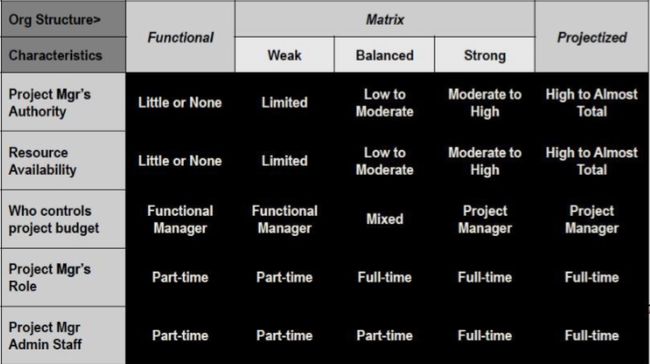- Some jenkins settings
SnC_
Jenkins连接到特定gitlabproject的特定branch我采用的方法是在pipeline的script中使用git命令来指定branch。如下:stage('Clonerepository'){steps{gitbranch:'develop',credentialsId:'gitlab-credential-id',url:'http://gitlab.com/repo.git'}}
- 新能源汽车 BMS 学习笔记篇—BMS 基本定义及分类
WPG大大通
其他笔记汽车BMS经验分享新能源电池
一、BMS定义1、概念:BMS(BatteryManagementSystem)即电池管理系统,其管理对象是二次电池(充电电池或蓄电池),其主要目的是电池的利用率,防止电池出现过度充电和过度放电,可应用于电动汽车、电瓶车、机器人、无人机等图片来源:腾讯网https://new.qq.com《标准普尔警告,电动汽车电池生产面临供应链和地缘政治风险》2、四大功能①感知和测量:检测电池的电压、电流、温度
- Sentinel实时监控不展示问题
朱杰jjj
sentinelsentinel
问题官方插件Endpoint支持,可以实时统计出SpringBoot的健康状况和请求的调用信息在使用Endpoint特性之前需要在Maven中添加spring-boot-starter-actuator依赖,并在配置中允许Endpoints的访问。SpringBoot1.x中添加配置management.security.enabled=false。暴露的endpoint路径为/sentinelS
- 机电综合管理系统架构
小熊coder
机载系统系统架构
文章目录一、机电综合管理系统架构1.系统概述2.架构层次3.核心组件二、余度管理1.余度概述2.硬件冗余3.软件冗余4.通信冗余三、总线架构1.MIL-STD-1553B总线2.ARINC429总线3.ARINC629总线4.AFDX/ARINC664总线四、未来发展趋势1.分布式架构2.高速网络3.智能化与自动化结语机电综合管理系统(ElectromechanicalManagementSyst
- CMU 15-445/645 Lab2-B+Tree Index
yyy_3y
CMU-15/445b树数据结构CMU15-445数据库
0.写在前面GitHub同步更新https://github.com/kaniel-outis/CMU15-445Lab2的地址:https://15445.courses.cs.cmu.edu/fall2020/project2/本文主要总结一下在写Lab2需要的基础知识以及Task的解决思路(不公开代码,如果有问题可以留言)。Lab2的主要内容是B+tree的定义和Insert、Delete操
- HALTT4LLM:大型语言模型的幻觉检测指标
谢忻含Norma
HALTT4LLM:大型语言模型的幻觉检测指标haltt4llmThisprojectisanattempttocreateacommonmetrictotestLLM'sforprogressineliminatinghallucinationswhichisthemostseriouscurrentprobleminwidespreadadoptionofLLM'sformanyrealpur
- 如何运用SCRM系统做好客户管理?
腾迹
bigdata产品运营大数据
随着互联网的更新迭代发展,大部分的企业都是有在应用SCRM系统来进行客户关系管理,丰富、完善用户标签,从而更加了解消费者所需要的产品和服务。SCRM的全称是SocialCustomerRelationshipManagement,是社会化客户关系管理的简称,主打的是以客户互动为中心,增加参与体验、互动了解,创造双向价值的工具。SCRM更加以消费者为中心,并且重点关注充分发挥每个消费者的社交价值,实
- GEO数据的下载和处理|GEO数据转换为Gene symbol|GEO注释文件提取symbol|查看样本标签|查看GEO数据疾病或正常|生物信息基础
Red Red
生信小技巧学习笔记生物信息r语言GEO数据库数据库
GEO数据的下载和处理|GEO数据转换为Genesymbol|GEO注释文件提取symbol|查看样本标签|查看GEO数据疾病或正常|生物信息基础数据的下载和处理首先在GEO数据库中通过GSEID找到相关数据,然后下载txt文件。数据读取与处理。#设置工作路径,也就是你的分析数据存放以及要保存到地方setwd(dir="C:\\Users\\LiaoMinzhen\\PycharmProjects
- 史上最全的maven的pom.xml文件详解
Meta999
Maven
注:详解文件中,用红色进行标注的是平常项目中常用的配置节点。要详细学习!转载的,太经典了、、、、欢迎收藏xxxxxxxxxxxx4.0.0xxxxxxjar1.0-SNAPSHOTxxx-mavenhttp://maven.apache.orgAmavenprojecttostudymaven.jirahttp://jira.baidu.com/
[email protected]
- 【Unity基础】如何选择脚本编译方式Mono和IL2CPP?
tealcwu
Unity基础unity游戏引擎
Edit->ProjectSettings->Player在Unity中,ScriptingBackend决定了项目的脚本编译方式,即如何将C#代码转换为可执行代码。Unity提供了两种主要的ScriptingBackend选项:Mono和IL2CPP。它们之间的区别影响了项目的性能、平台支持、编译时间和调试体验。以下是两者的详细对比:1.Mono简介:Mono是Unity最早使用的脚本后端,基于
- python工程打包成whl文件
机灵巢穴_WitNest
pythonpython开发语言
资料:PackagingPythonProjects—PythonPackagingUserGuide6.Modules—Python3.11.4documentation步骤1.安装打包工具python3-mpipinstallsetuptoolswheeltwine2.更新pip工具python3-mpipinstall--upgradepip3.创建工程结构python_test_packa
- 2020-11-12 写单片机内存的脚本 nc openocd 事务自动测试
linuxScripter
这是写单片机内存的脚本:z@z-ThinkPad-T400:~/zworkT400/EDA_heiche/zREPOgit/simple-gcc-stm32-project$catz.wholeRun.oneCase.cmdcattmp6.toWrite|awk'{system("echomwb"$1""$2"|nclocalhost4444");}'catUSER/DEBUG/debug.h|g
- 压测服务器并使用 Grafana 进行可视化
豆瑞瑞
grafana
简介仓库代码GitCode-全球开发者的开源社区,开源代码托管平台参考Welcome!-TheApacheHTTPServerProjectGrafana|查询、可视化、警报观测平台https://prometheus.io/docs/introduction/overview/
- idea右侧工具栏找不到maven窗口
足球数据分析
intellij-idea
idea没有识别到是maven项目处理方案:右键pom.xml文件,点击"addasmavenproject"
- UnrealEngine学习(03):虚幻引擎术语
依晴无旧
UnrealEngine学习虚幻游戏引擎
1.项目虚幻引擎5项目(UnrealEngine5Project)中包含游戏的所有内容。项目中包含的大量文件夹都在磁盘上,例如Blueprints和Materials。你可以按照自己的意愿命名文件夹并将其整理到项目中。虚幻编辑器(UnrealEditor)中的内容浏览器(ContentBrowser)面板显示与磁盘上的Project文件夹相同的目录结构。每个项目都有与其关联的.uproject文件
- C#LINQ常用扩展语句
月落.
C#c#linqsolr
在C#中,LINQ提供了许多扩展方法,这些方法定义在System.Linq命名空间中。以下是一些常用的LINQ扩展方法:Where-过滤数据集合,返回满足条件的元素。varfilteredItems=collection.Where(item=>item.SomeProperty>10);Select-从数据集合中选择数据或创建新的投影。varprojectedItems=collection.S
- Celery 立即执行任务 延迟执行任务
i0208
Celerypython
包架构封装project├──celery_task#celery包│├──__init__.py#包文件│├──celery.py#celery连接和配置相关文件,且名字必须交celery.py│└──tasks.py#任务体函数文件├──add_task.py#执行任务脚本文件(这个文件可以在任意位置)└──get_result.py#获取结果注意:任务体代码文件要与celery.py文件在
- Hadoop windows intelij 跑 MR WordCount
piziyang12138
一、软件环境我使用的软件版本如下:IntellijIdea2017.1Maven3.3.9Hadoop分布式环境二、创建maven工程打开Idea,file->new->Project,左侧面板选择maven工程。(如果只跑MapReduce创建java工程即可,不用勾选Creatfromarchetype,如果想创建web工程或者使用骨架可以勾选)image.png设置GroupId和Artif
- idea 启动tomcat 工程_使用IDEA创建JavaWeb项目 部署本地tomcat并运行
心在天上脚在地上
idea启动tomcat工程
一、下载商业版IDEA二、新建JavaWeb项目1、在菜单栏找到File>>New>>Project2、在弹出的窗口中找到JavaEnterPrise>>WebApplication,点击Next3、填写项目名称,选择项目位置,然后Finish4、在左侧窗口可以看到IDEA创建JavaWeb工程的目录结构,在src中写java代码,在web目录下放jsp页面。三、下载tomacat下载完成后,解压
- 探索.NET Core的宝库:开源项目的无限可能
胡易黎Nicole
探索.NETCore的宝库:开源项目的无限可能awesome-dotnet-core-applicationsAnawesomecollectionof.NETCorerealtime,sample,architecturereferenceapplicationprojects项目地址:https://gitcode.com/gh_mirrors/aw/awesome-dotnet-core-a
- 请假代码java web_学生请假管理系统
喵灵魂
请假代码javaweb
文件名大小更新时间学生请假管理系统02019-05-31学生请假管理系统\Leave_System02019-05-31学生请假管理系统\Leave_System\.classpath9092019-05-01学生请假管理系统\Leave_System\.project9122019-04-29学生请假管理系统\Leave_System\.settings02019-05-31学生请假管理系统\L
- Axure RP 9 超级教程:自适应视图(Adaptive View Set)
凡间萌宠
本文适用于(非)汉化版AxureRP9自适应视图入门操作废话不表,直接如题。以下为详细步骤:1.新建页面,名称自定,如“自适应”。新建页面2.选择Project下的AdaptiveViewSets...项。选择AdaptiveViewSets3.弹出自适应设置框,点击“+Add”自适应设置框4.弹出新增自适应页面:新增自适应页面5.点击Presets(预制),弹出不同平台以及不同型号大小的显示规格
- Ros2_学习整理_7_Launch文件编写(赵虚左老师)
干掉乔治的猪
Ros2理论与实践机器人c++python人工智能学习方法ros2
Ros2_Launch文件编写简化节点的配置与启动,提高程序的启动效率。1、Launch的基本使用流程1-1.C++实现1.编写Launch文件python格式launch文件XML格式Launch文件YAML格式Launch文件2.编辑配置文件在CMakeList.txt中添加语句:intall(DIRECTORYlaunchDESTINATIONshare/${PROJECT_NAME})3.
- 3. 测试Docker镜像
jcfszxc
RKNN系列RKNNrknn-toolkit2
运行命令进入Docker镜像:dockerrun-t-i--privileged\-v/dev/bus/usb:/dev/bus/usb\-v/path/to/your/project:/examples\rknn-toolkit2:2.1.0-cp38\/bin/bash参数解释:dockerrun:这是Docker的基本命令,用于创建和启动一个新的容器。-t:分配一个伪终端(pseudo-TT
- Awesome TensorFlow
weixin_30594001
人工智能移动开发大数据
AwesomeTensorFlowAcuratedlistofawesomeTensorFlowexperiments,libraries,andprojects.Inspiredbyawesome-machine-learning.WhatisTensorFlow?TensorFlowisanopensourcesoftwarelibraryfornumericalcomputationusin
- IntelliJ IDEA下的使用 Lombok
Artifacts
在idea安装lombok插件image在步骤4,应该是个install,我的这个截图是已经安装完成的。步骤5,如果在线安装不成,可以试试离线安装。开启EnableannotationprocessingimagePOM增加依赖org.projectlomboklombok1.16.18provided最后一步增加@Data标签,可以直接看到生成的getset等结构了image
- R语言包AMORE安装报错问题以及RStudio与Rtools环境配置
卡卡_R-Python
R语言数据分析与可视化r语言开发语言
在使用R语言进行AMORE安装时会遇到报错,这时候需要采用解决办法:'''AMORE包安装,需要离线官网下载安装包:Indexof/src/contrib/Archive/AMORE(r-project.org)https://cran.r-project.org/src/contrib/Archive/AMORE/一、出现的问题最近开始学习R语言,安装了最新版的R4.4.1和RStudio,但安
- VS2008编译出现问题:error C2485: “__restrict”: 无法识别的扩展属性 解决办法
swanabin
编译错误
错误:Error3errorC2485:'__restrict':unrecognizedextendedattributef:\programfiles\microsoftvisualstudio8\vc\include\stdlib.h638解决办法:我在用VC编译某开源库时也遇到这个问题参考这个帖子http://www.codeproject.com/Messages/2651289/Re-
- 探索现代Web API开发的典范:Asp.Net Core Web API N-Tier项目
苏舰孝Noel
探索现代WebAPI开发的典范:Asp.NetCoreWebAPIN-Tier项目aspnetcore.ntier.NETCoreN-TierarchitectureWebApisampleproject.项目地址:https://gitcode.com/gh_mirrors/as/aspnetcore.ntier在寻求高效、可扩展且遵循最佳实践的API开发框架时,Asp.NetCoreWebAP
- 推荐:ASP.NET Core Web API 模板 —— 强大的启动项目!
戴洵珠Gerald
推荐:ASP.NETCoreWebAPI模板——强大的启动项目!aspnetcore-webapi-templateThisprojectisanWebAPIOpen-SourceBoilerplateTemplatethatincludesASP.NETCore5,WebAPIstandards,cleann-tierarchitecture,GraphQLservice,Redis,Mssql
- LeetCode[位运算] - #137 Single Number II
Cwind
javaAlgorithmLeetCode题解位运算
原题链接:#137 Single Number II
要求:
给定一个整型数组,其中除了一个元素之外,每个元素都出现三次。找出这个元素
注意:算法的时间复杂度应为O(n),最好不使用额外的内存空间
难度:中等
分析:
与#136类似,都是考察位运算。不过出现两次的可以使用异或运算的特性 n XOR n = 0, n XOR 0 = n,即某一
- 《JavaScript语言精粹》笔记
aijuans
JavaScript
0、JavaScript的简单数据类型包括数字、字符创、布尔值(true/false)、null和undefined值,其它值都是对象。
1、JavaScript只有一个数字类型,它在内部被表示为64位的浮点数。没有分离出整数,所以1和1.0的值相同。
2、NaN是一个数值,表示一个不能产生正常结果的运算结果。NaN不等于任何值,包括它本身。可以用函数isNaN(number)检测NaN,但是
- 你应该更新的Java知识之常用程序库
Kai_Ge
java
在很多人眼中,Java 已经是一门垂垂老矣的语言,但并不妨碍 Java 世界依然在前进。如果你曾离开 Java,云游于其它世界,或是每日只在遗留代码中挣扎,或许是时候抬起头,看看老 Java 中的新东西。
Guava
Guava[gwɑ:və],一句话,只要你做Java项目,就应该用Guava(Github)。
guava 是 Google 出品的一套 Java 核心库,在我看来,它甚至应该
- HttpClient
120153216
httpclient
/**
* 可以传对象的请求转发,对象已流形式放入HTTP中
*/
public static Object doPost(Map<String,Object> parmMap,String url)
{
Object object = null;
HttpClient hc = new HttpClient();
String fullURL
- Django model字段类型清单
2002wmj
django
Django 通过 models 实现数据库的创建、修改、删除等操作,本文为模型中一般常用的类型的清单,便于查询和使用: AutoField:一个自动递增的整型字段,添加记录时它会自动增长。你通常不需要直接使用这个字段;如果你不指定主键的话,系统会自动添加一个主键字段到你的model。(参阅自动主键字段) BooleanField:布尔字段,管理工具里会自动将其描述为checkbox。 Cha
- 在SQLSERVER中查找消耗CPU最多的SQL
357029540
SQL Server
返回消耗CPU数目最多的10条语句
SELECT TOP 10
total_worker_time/execution_count AS avg_cpu_cost, plan_handle,
execution_count,
(SELECT SUBSTRING(text, statement_start_of
- Myeclipse项目无法部署,Undefined exploded archive location
7454103
eclipseMyEclipse
做个备忘!
错误信息为:
Undefined exploded archive location
原因:
在工程转移过程中,导致工程的配置文件出错;
解决方法:
- GMT时间格式转换
adminjun
GMT时间转换
普通的时间转换问题我这里就不再罗嗦了,我想大家应该都会那种低级的转换问题吧,现在我向大家总结一下如何转换GMT时间格式,这种格式的转换方法网上还不是很多,所以有必要总结一下,也算给有需要的朋友一个小小的帮助啦。
1、可以使用
SimpleDateFormat SimpleDateFormat
EEE-三位星期
d-天
MMM-月
yyyy-四位年
- Oracle数据库新装连接串问题
aijuans
oracle数据库
割接新装了数据库,客户端登陆无问题,apache/cgi-bin程序有问题,sqlnet.log日志如下:
Fatal NI connect error 12170.
VERSION INFORMATION: TNS for Linux: Version 10.2.0.4.0 - Product
- 回顾java数组复制
ayaoxinchao
java数组
在写这篇文章之前,也看了一些别人写的,基本上都是大同小异。文章是对java数组复制基础知识的回顾,算是作为学习笔记,供以后自己翻阅。首先,简单想一下这个问题:为什么要复制数组?我的个人理解:在我们在利用一个数组时,在每一次使用,我们都希望它的值是初始值。这时我们就要对数组进行复制,以达到原始数组值的安全性。java数组复制大致分为3种方式:①for循环方式 ②clone方式 ③arrayCopy方
- java web会话监听并使用spring注入
bewithme
Java Web
在java web应用中,当你想在建立会话或移除会话时,让系统做某些事情,比如说,统计在线用户,每当有用户登录时,或退出时,那么可以用下面这个监听器来监听。
import java.util.ArrayList;
import java.ut
- NoSQL数据库之Redis数据库管理(Redis的常用命令及高级应用)
bijian1013
redis数据库NoSQL
一 .Redis常用命令
Redis提供了丰富的命令对数据库和各种数据库类型进行操作,这些命令可以在Linux终端使用。
a.键值相关命令
b.服务器相关命令
1.键值相关命令
&
- java枚举序列化问题
bingyingao
java枚举序列化
对象在网络中传输离不开序列化和反序列化。而如果序列化的对象中有枚举值就要特别注意一些发布兼容问题:
1.加一个枚举值
新机器代码读分布式缓存中老对象,没有问题,不会抛异常。
老机器代码读分布式缓存中新对像,反序列化会中断,所以在所有机器发布完成之前要避免出现新对象,或者提前让老机器拥有新增枚举的jar。
2.删一个枚举值
新机器代码读分布式缓存中老对象,反序列
- 【Spark七十八】Spark Kyro序列化
bit1129
spark
当使用SparkContext的saveAsObjectFile方法将对象序列化到文件,以及通过objectFile方法将对象从文件反序列出来的时候,Spark默认使用Java的序列化以及反序列化机制,通常情况下,这种序列化机制是很低效的,Spark支持使用Kyro作为对象的序列化和反序列化机制,序列化的速度比java更快,但是使用Kyro时要注意,Kyro目前还是有些bug。
Spark
- Hybridizing OO and Functional Design
bookjovi
erlanghaskell
推荐博文:
Tell Above, and Ask Below - Hybridizing OO and Functional Design
文章中把OO和FP讲的深入透彻,里面把smalltalk和haskell作为典型的两种编程范式代表语言,此点本人极为同意,smalltalk可以说是最能体现OO设计的面向对象语言,smalltalk的作者Alan kay也是OO的最早先驱,
- Java-Collections Framework学习与总结-HashMap
BrokenDreams
Collections
开发中常常会用到这样一种数据结构,根据一个关键字,找到所需的信息。这个过程有点像查字典,拿到一个key,去字典表中查找对应的value。Java1.0版本提供了这样的类java.util.Dictionary(抽象类),基本上支持字典表的操作。后来引入了Map接口,更好的描述的这种数据结构。
&nb
- 读《研磨设计模式》-代码笔记-职责链模式-Chain Of Responsibility
bylijinnan
java设计模式
声明: 本文只为方便我个人查阅和理解,详细的分析以及源代码请移步 原作者的博客http://chjavach.iteye.com/
/**
* 业务逻辑:项目经理只能处理500以下的费用申请,部门经理是1000,总经理不设限。简单起见,只同意“Tom”的申请
* bylijinnan
*/
abstract class Handler {
/*
- Android中启动外部程序
cherishLC
android
1、启动外部程序
引用自:
http://blog.csdn.net/linxcool/article/details/7692374
//方法一
Intent intent=new Intent();
//包名 包名+类名(全路径)
intent.setClassName("com.linxcool", "com.linxcool.PlaneActi
- summary_keep_rate
coollyj
SUM
BEGIN
/*DECLARE minDate varchar(20) ;
DECLARE maxDate varchar(20) ;*/
DECLARE stkDate varchar(20) ;
DECLARE done int default -1;
/* 游标中 注册服务器地址 */
DE
- hadoop hdfs 添加数据目录出错
daizj
hadoophdfs扩容
由于原来配置的hadoop data目录快要用满了,故准备修改配置文件增加数据目录,以便扩容,但由于疏忽,把core-site.xml, hdfs-site.xml配置文件dfs.datanode.data.dir 配置项增加了配置目录,但未创建实际目录,重启datanode服务时,报如下错误:
2014-11-18 08:51:39,128 WARN org.apache.hadoop.h
- grep 目录级联查找
dongwei_6688
grep
在Mac或者Linux下使用grep进行文件内容查找时,如果给定的目标搜索路径是当前目录,那么它默认只搜索当前目录下的文件,而不会搜索其下面子目录中的文件内容,如果想级联搜索下级目录,需要使用一个“-r”参数:
grep -n -r "GET" .
上面的命令将会找出当前目录“.”及当前目录中所有下级目录
- yii 修改模块使用的布局文件
dcj3sjt126com
yiilayouts
方法一:yii模块默认使用系统当前的主题布局文件,如果在主配置文件中配置了主题比如: 'theme'=>'mythm', 那么yii的模块就使用 protected/themes/mythm/views/layouts 下的布局文件; 如果未配置主题,那么 yii的模块就使用 protected/views/layouts 下的布局文件, 总之默认不是使用自身目录 pr
- 设计模式之单例模式
come_for_dream
设计模式单例模式懒汉式饿汉式双重检验锁失败无序写入
今天该来的面试还没来,这个店估计不会来电话了,安静下来写写博客也不错,没事翻了翻小易哥的博客甚至与大牛们之间的差距,基础知识不扎实建起来的楼再高也只能是危楼罢了,陈下心回归基础把以前学过的东西总结一下。
*********************************
- 8、数组
豆豆咖啡
二维数组数组一维数组
一、概念
数组是同一种类型数据的集合。其实数组就是一个容器。
二、好处
可以自动给数组中的元素从0开始编号,方便操作这些元素
三、格式
//一维数组
1,元素类型[] 变量名 = new 元素类型[元素的个数]
int[] arr =
- Decode Ways
hcx2013
decode
A message containing letters from A-Z is being encoded to numbers using the following mapping:
'A' -> 1
'B' -> 2
...
'Z' -> 26
Given an encoded message containing digits, det
- Spring4.1新特性——异步调度和事件机制的异常处理
jinnianshilongnian
spring 4.1
目录
Spring4.1新特性——综述
Spring4.1新特性——Spring核心部分及其他
Spring4.1新特性——Spring缓存框架增强
Spring4.1新特性——异步调用和事件机制的异常处理
Spring4.1新特性——数据库集成测试脚本初始化
Spring4.1新特性——Spring MVC增强
Spring4.1新特性——页面自动化测试框架Spring MVC T
- squid3(高命中率)缓存服务器配置
liyonghui160com
系统:centos 5.x
需要的软件:squid-3.0.STABLE25.tar.gz
1.下载squid
wget http://www.squid-cache.org/Versions/v3/3.0/squid-3.0.STABLE25.tar.gz
tar zxf squid-3.0.STABLE25.tar.gz &&
- 避免Java应用中NullPointerException的技巧和最佳实践
pda158
java
1) 从已知的String对象中调用equals()和equalsIgnoreCase()方法,而非未知对象。 总是从已知的非空String对象中调用equals()方法。因为equals()方法是对称的,调用a.equals(b)和调用b.equals(a)是完全相同的,这也是为什么程序员对于对象a和b这么不上心。如果调用者是空指针,这种调用可能导致一个空指针异常
Object unk
- 如何在Swift语言中创建http请求
shoothao
httpswift
概述:本文通过实例从同步和异步两种方式上回答了”如何在Swift语言中创建http请求“的问题。
如果你对Objective-C比较了解的话,对于如何创建http请求你一定驾轻就熟了,而新语言Swift与其相比只有语法上的区别。但是,对才接触到这个崭新平台的初学者来说,他们仍然想知道“如何在Swift语言中创建http请求?”。
在这里,我将作出一些建议来回答上述问题。常见的
- Spring事务的传播方式
uule
spring事务
传播方式:
新建事务
required
required_new - 挂起当前
非事务方式运行
supports
&nbs
